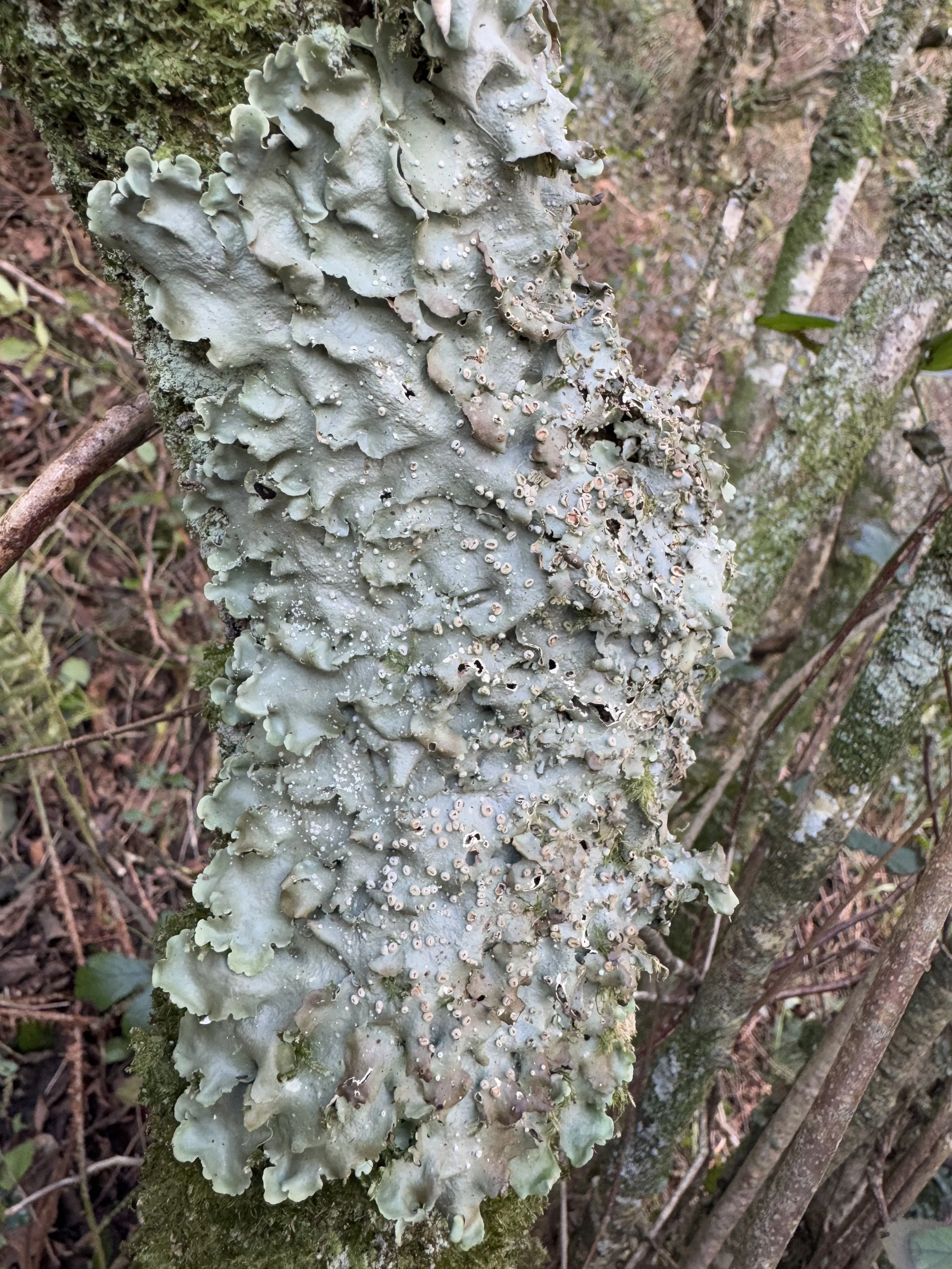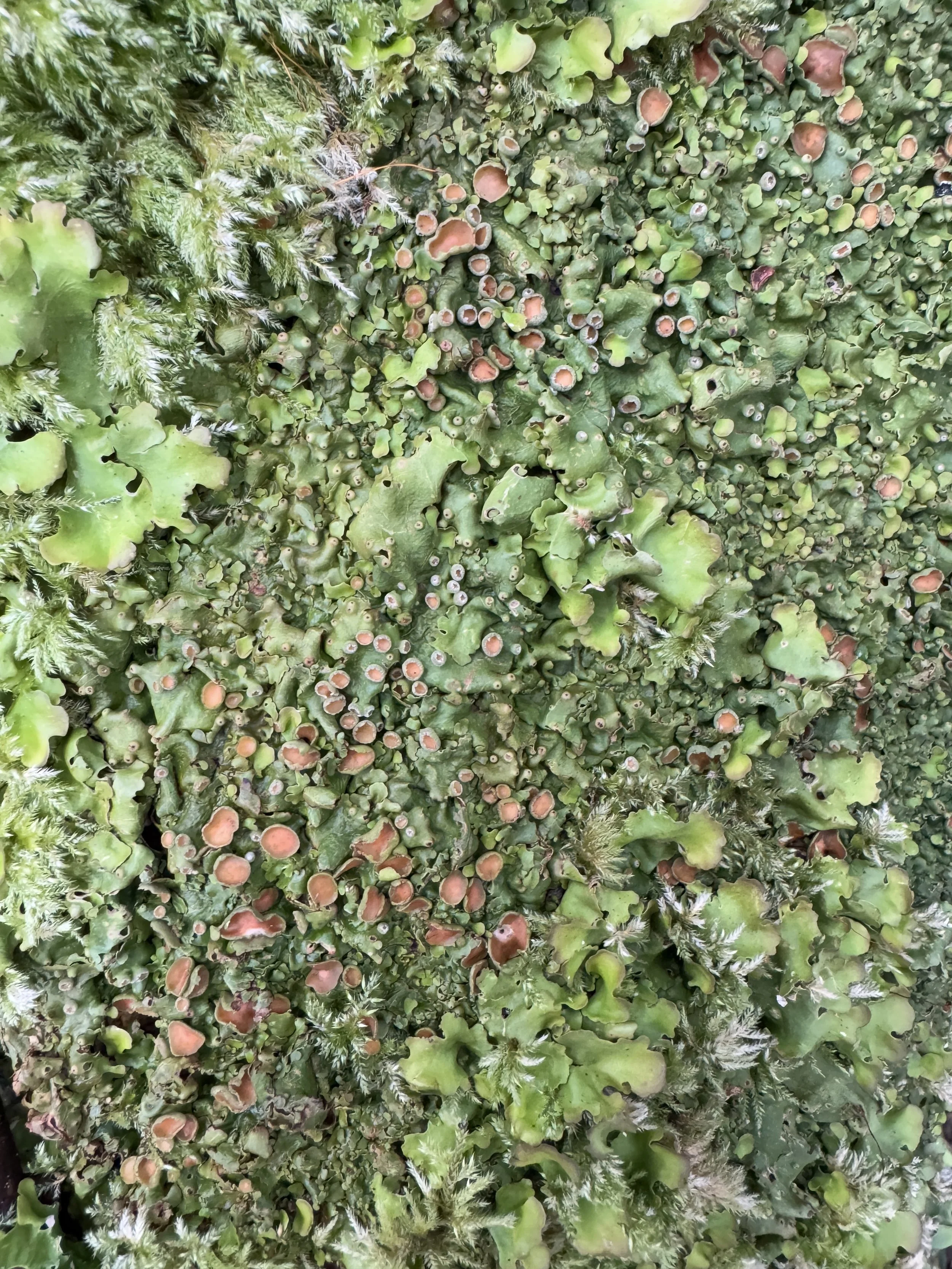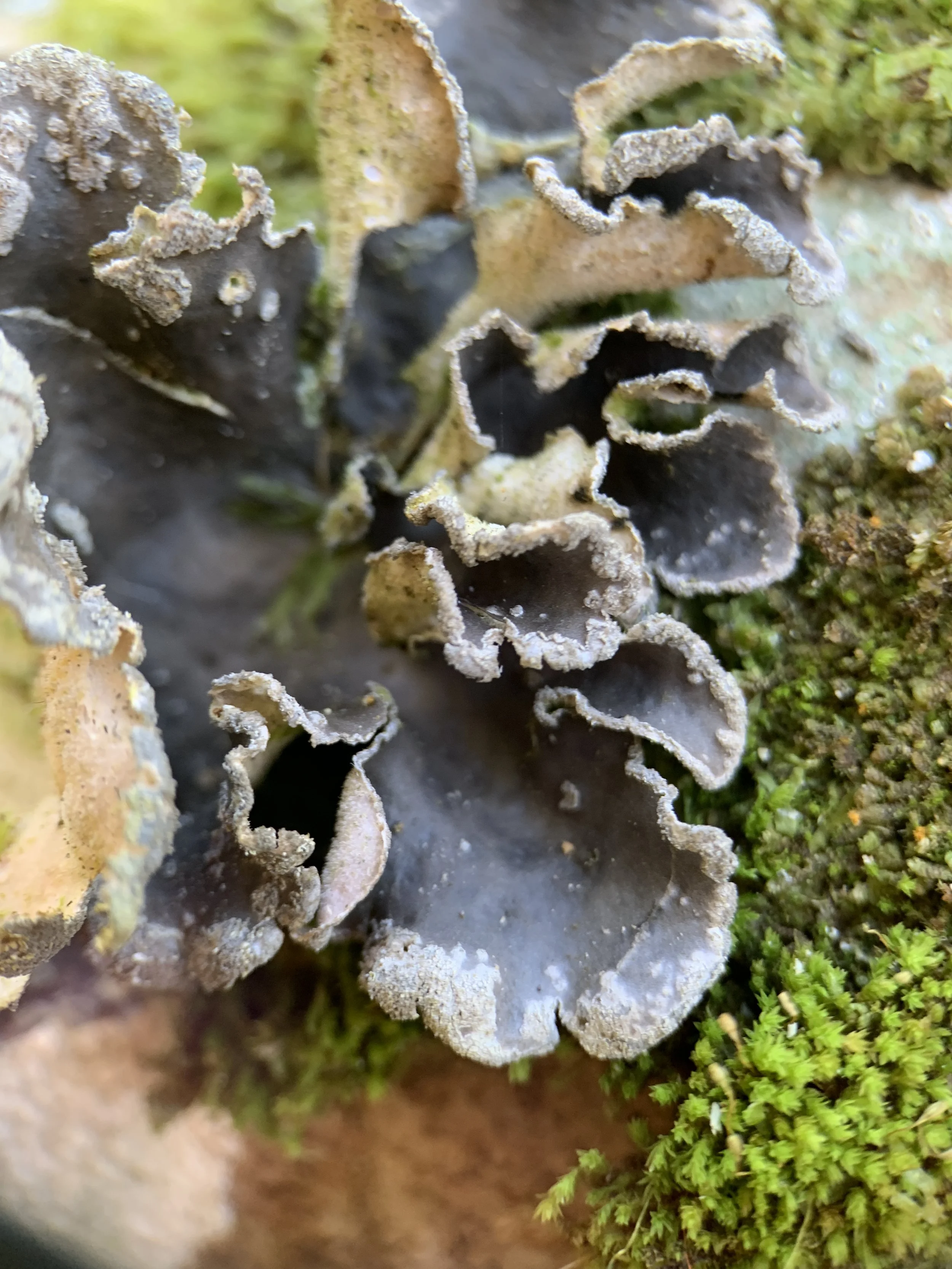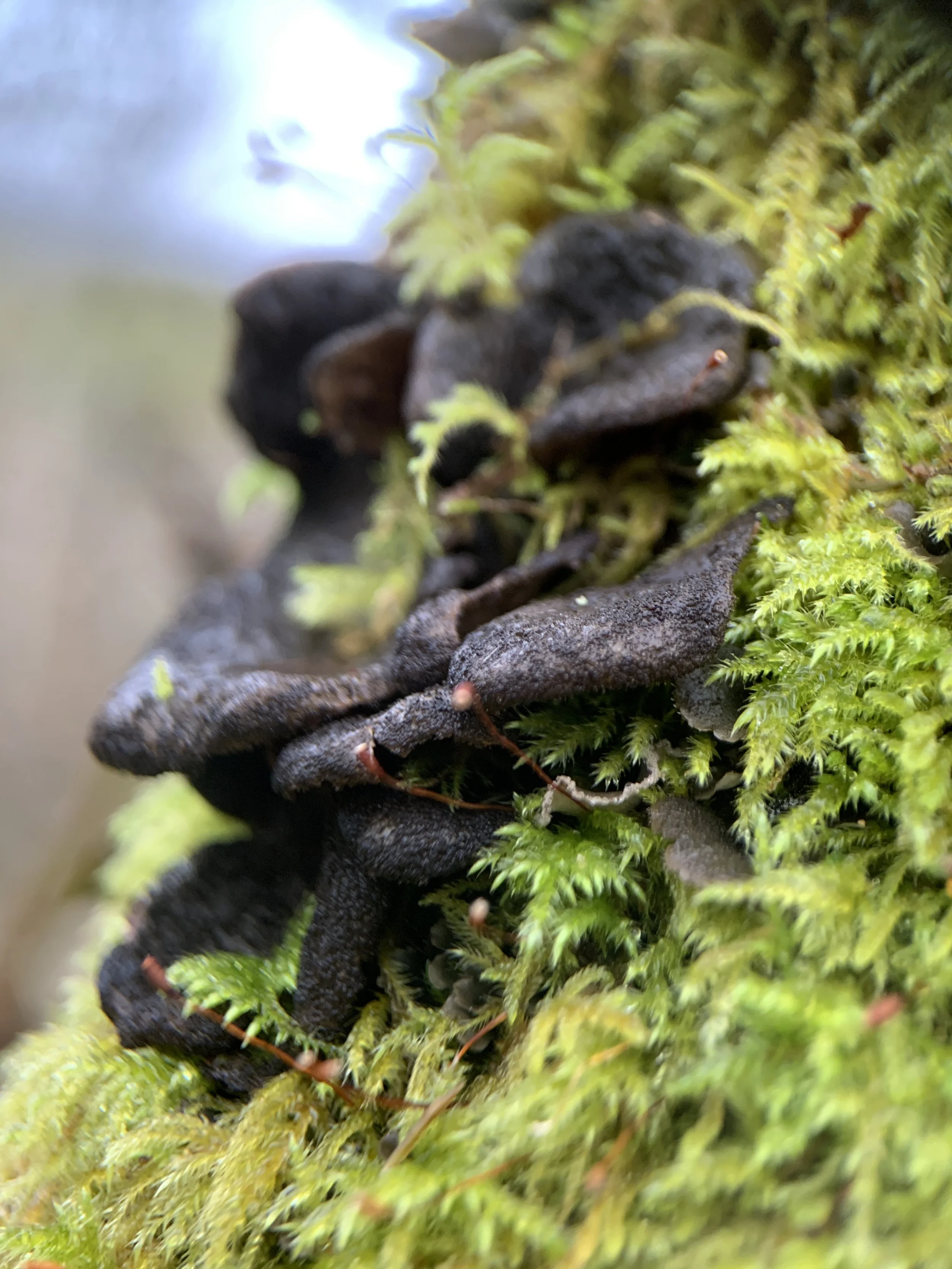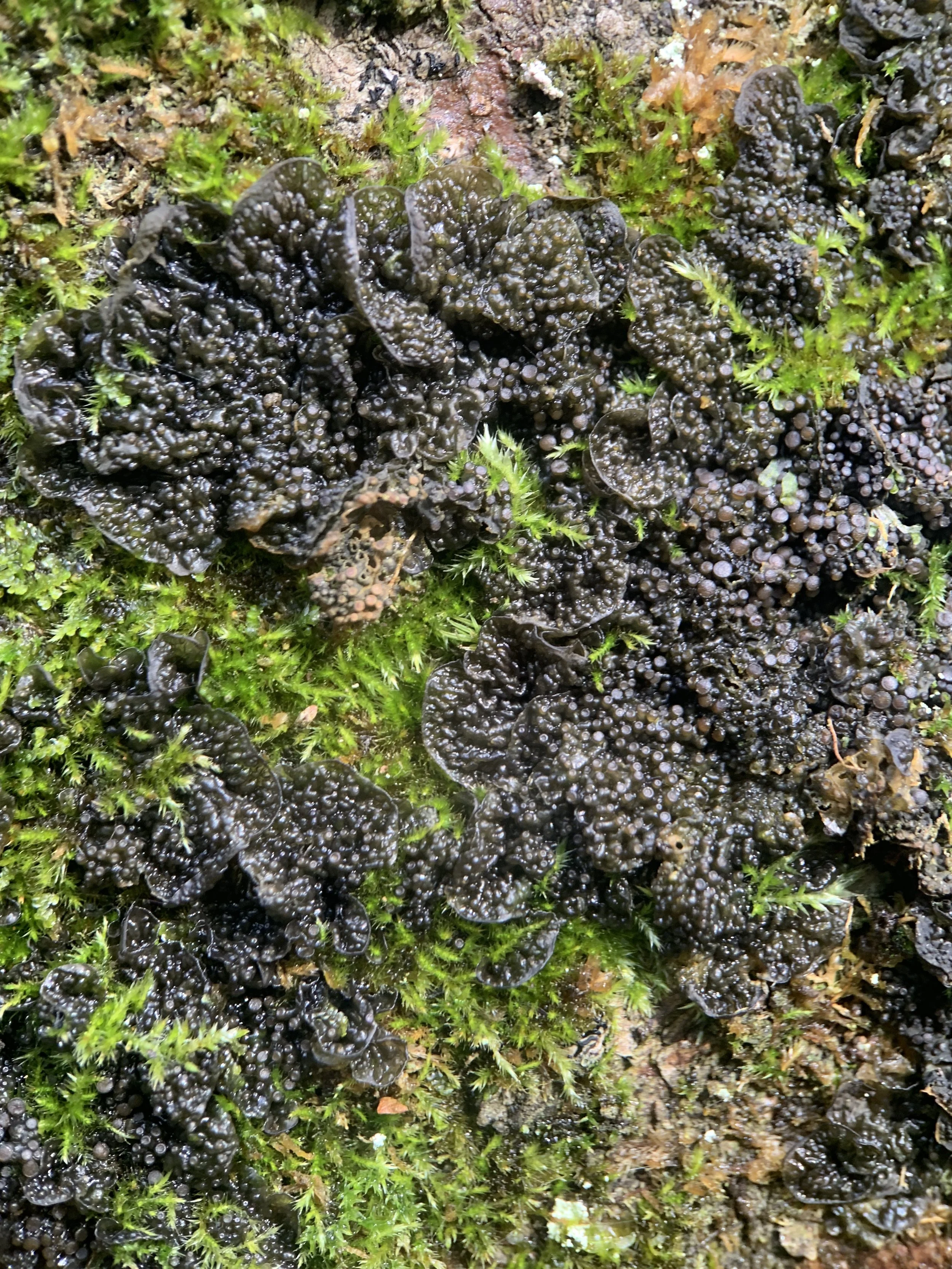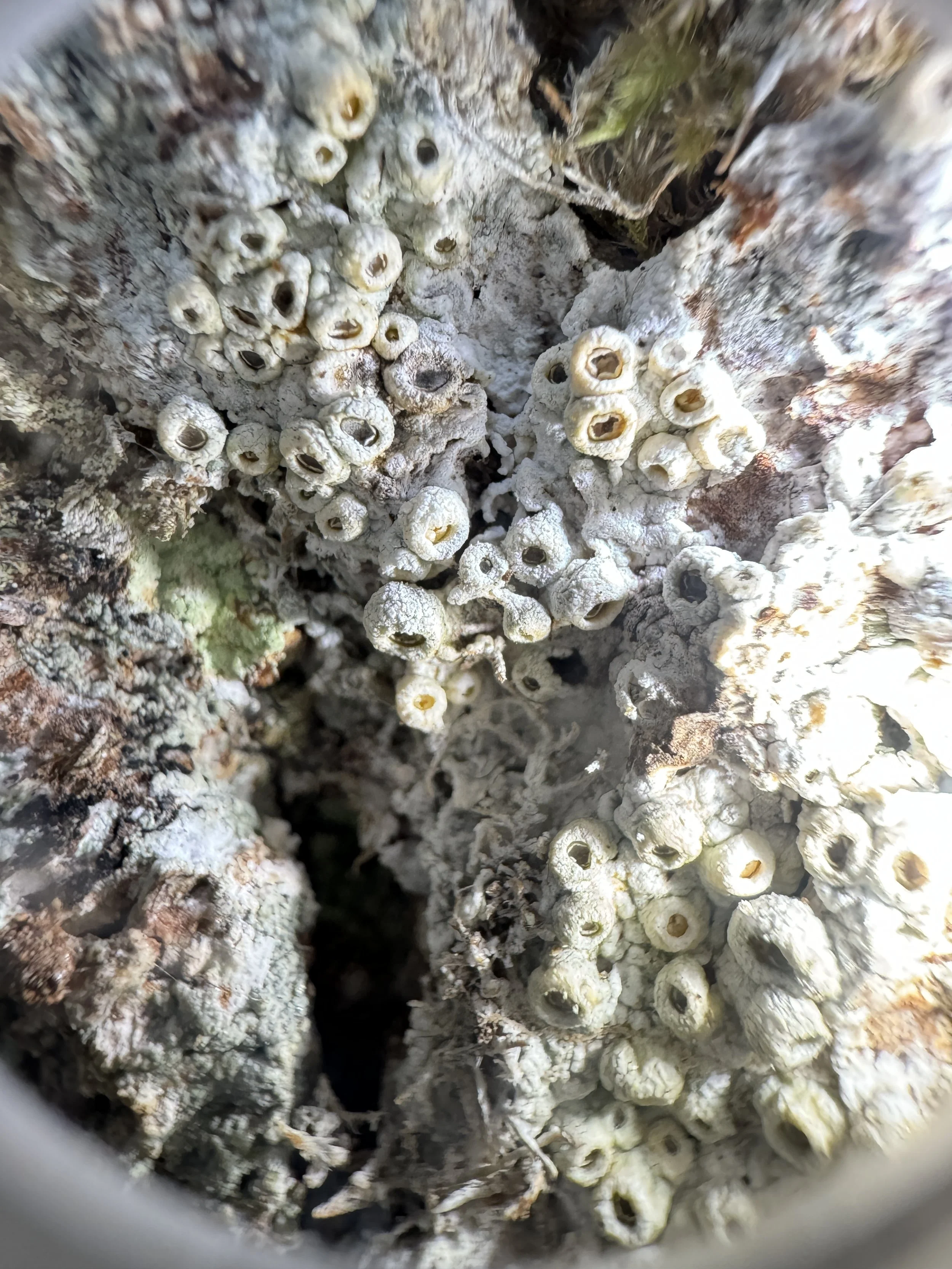RAINFOREST LICHENS TO SPOT ON YOUR NEXT WOODLAND WALK
Written by: Angie Cruse (Plantlife)
Pectenia atlantica and Lobaria pulmonaria at Millook, Cornwall. Credit: Angie Cruse
As Plantlife’s Rainforest Advisor for the Southwest of England, Angie Cruse supports landowners & site managers in understanding the lower-plant species living in their woodlands and how best to manage these habitats for resilience and richness.
The Woodland Trust and Plantlife collaborate closely in the Southwest. When working together, we seek out and protect rare lichens, run training events, and shape future plans to safeguard and enrich our temperate rainforests.
Here are some of the wonderful rainforest lichens you can spot in November, and throughout the year. Just remember: wet and dry weather can completely change their appearance! Below are Angie and Plantlife’s top tips to help you identify them and build your lichen-spotting skills.
Tree Lungwort lichen - Lobaria pulmonaria
The famous Tree Lungwort lichen - Lobaria pulmonaria is probably the best-known temperate rainforest lichen for its rather magical appearance when finding it on the trunks and branches of mature Oaks, Sycamore, Ash, Hazel and Willow. It’s a large lichen with loosely attached lobey leaves and a network of ridges giving it the lung-like appearance. Early herbalists thought its appearance, resembling lung tissue meant it could treat lung diseases. This idea came from a medieval belief that plants resembling body parts could heal them, but I like to think of it as the lungs of the rainforest.
Dragonskin – Ricasolia virens
This beautiful lichen has a special talent — it changes colour when it gets wet! When dry, it has a grey to eggshell blue appearance. When it rains or humidity rises, it turns a vivid, glowing green as the algae inside become active again and start photosynthesizing. Often at a distance when wet, this species can be confused with a brightly coloured moss covering the bark of the tree. This lichen also frequently features orange to chestnut brown discs which are called apothecia. This is where the spores are produced and mature, then released into the air to spread and hopefully start a new lichen partnership somewhere else.
Sticta species:
There are several to look out for and two smell fishy when wet! All three have rounded lobes and easily spotted amongst the mossy bark of willow, hazels and other base rich trees. Colours range from grey brown to brown. Sticta species prefer humid, well-lit, sheltered woodlands (often on moss-covered trunks or branches) so can be found in wet woodlands and riparian habitats. These are wonderful indicator species of international importance and are globally distributed in temperate rainforest regions.
Floury sticta - Sticta limbata Grey to grey brown thallus with rounded lobes and floury powdery grey edges which are called isidia. Credit: Angie Cruse
Stinky sticta 1 - Sticta sylvatica Dark brown to reddish brown (grey brown when dry). Lobes are rounded but distinctively divided. Credit: Angie Cruse
Stinky sticta 2 - Sticta fuliginosa s. lat. - Dark brown thallus with rounded lobes that aren’t distinctively divided into lobes. Credit: Angie Cruse
Tattered Jelly-skin Lichen - Scytinium lichenoides
The Tattered Jelly-skin lichen is a great lichen to look for. If you are looking at a rich mossy tree or rock and see blackened areas amongst the luscious green, get closer as you might find this pretty little lichen that looks like tiny lollo rossa lettuce’s. Its presence can suggest it’s worth looking a little closer at the tree for some other rarer species that also like a base rich mossy substrate. If you don’t see the little tatty scrolls but can see black jelly like lobes or discs, it might be that you are looking at a rare jelly lichen such as some of the Collema species.
Bat wing Lichens - Collema
Collema furfuraceum is one of several black jelly lichens with subtle differences, this lichen is usually more pressed against the bark than some other Collema species and radiates outwards. Its surface has distinct ridges and tiny cylindrical/branched structures (isidia) — these help it reproduce asexually by breaking off and growing elsewhere.
An even rarer bat wing lichen can be found in one of Woodland Trust’s own woodlands on the North Coast of Cornwall. The name of this lichen is Collema nigrescens and is specifically being monitored and looked after by Plantlife and Woodland Trust due to the species being in decline. As you can see in the photos below, both of these lichens resemble bat wings!
The Barnicle Lichen - Thelotrema lepadinum
The Barnicle Lichen is a pale crust forming lichen that is considered an old woodland indicator species. Its spore-producing structures look like tiny barnacles stuck on the bark. You can see in the image how the name Barnacle describes its apothecia, which are in raised wart like structures. It's a lot of fun to find but make sure you are equipped with a hand lens!
MINI GLOSSARY
-
Type of fruiting body (a structure that makes spores) found in certain fungi and lichens.
They often look like little dots, discs or cups on the surface of a lichen. Sometimes red, brown, black, orange or even yellow.
Fun Fact: Apothecium produce millions of microscopic spores, but for a new lichen to grow, one of those spores still must find the right kind of alga or cyanobacterium to partner with again - kind of like “fungal dating.”
-
Main body of a lichen, what you actually see growing on a rock, tree bark, or soil.
Fun fact: The structure of the thallus is so stable that lichens can survive extreme environments, from Arctic tundra to desert rocks and even high mountains because the fungus protects the algae while the algae feed the fungus.
-
Leaf of a foliose (leafy) lichen.
Fun Fact: When lichens dry out, photosynthesis stops but the lobes can “wake up” within minutes of getting wet, restarting photosynthesis almost instantly! It’s like flicking a biological on/off switch powered by rain.
Managing temperate rainforests - plantlife
Plantlife’s interactive toolkit provides you with a better understanding of temperate rainforests and a guide to managing the habitat for lichens and bryophytes that grow there. You can also find an online- Lichen ID course featured at the end of the Lichen module.



